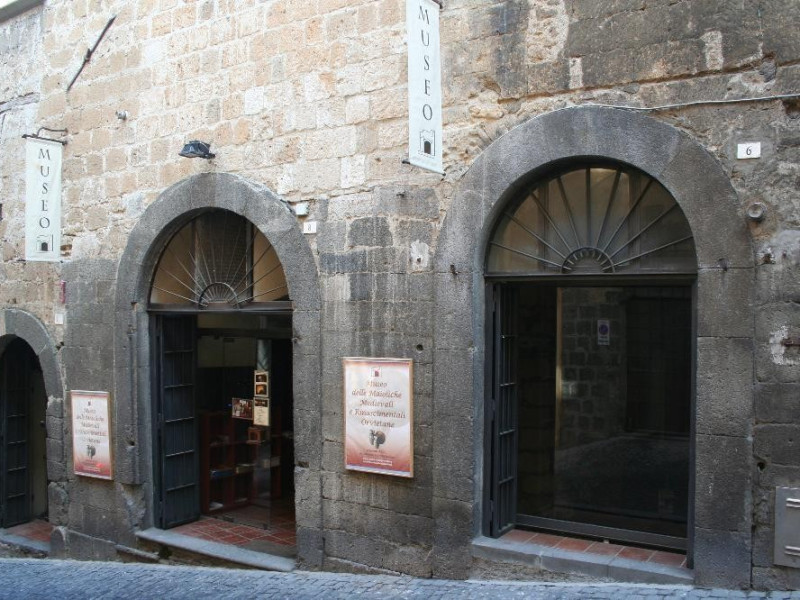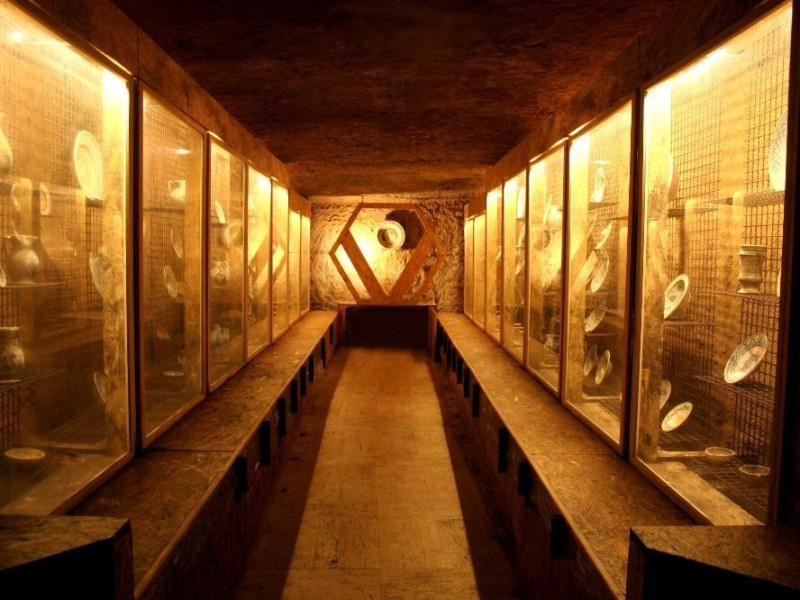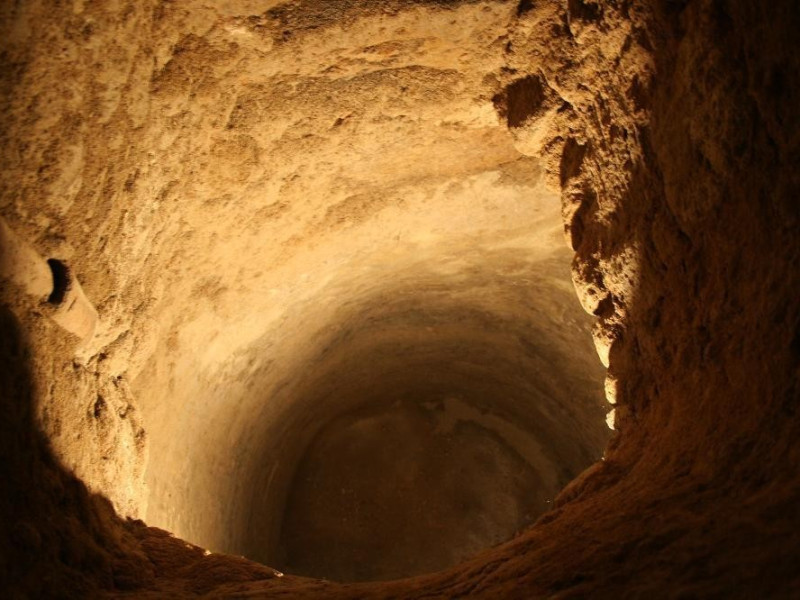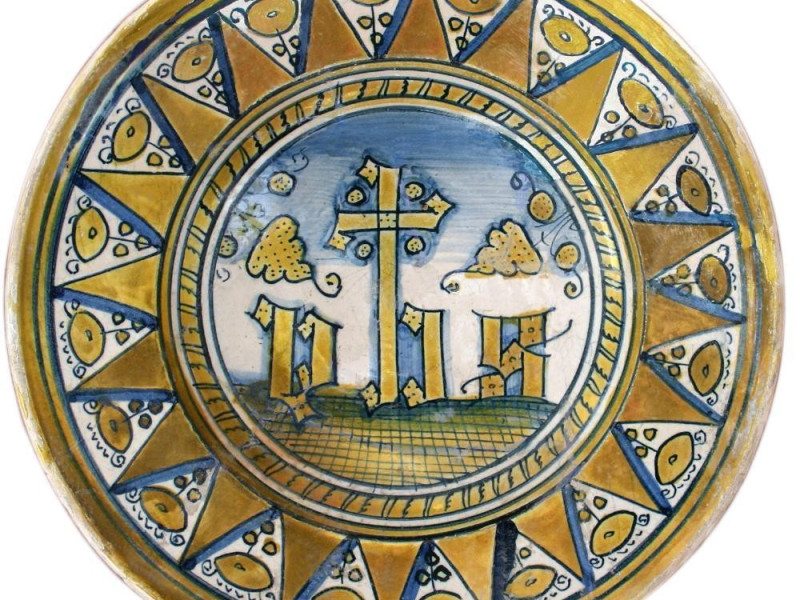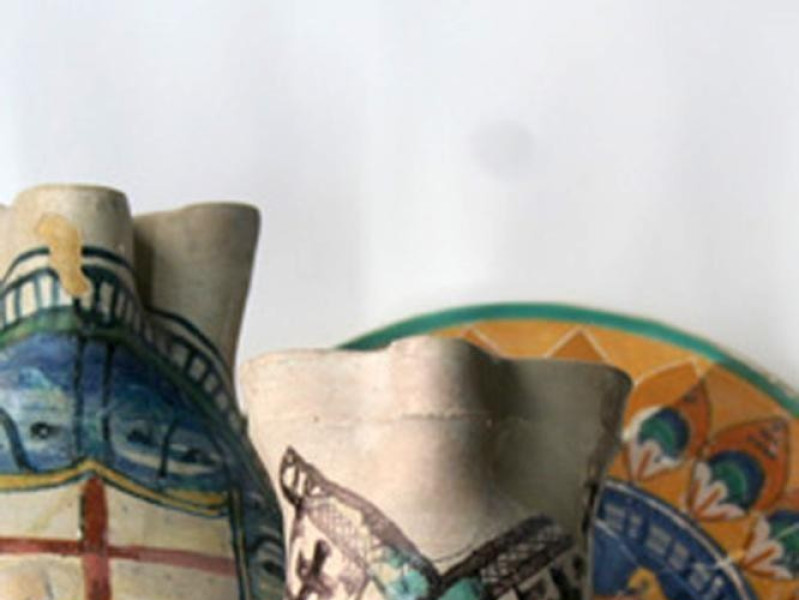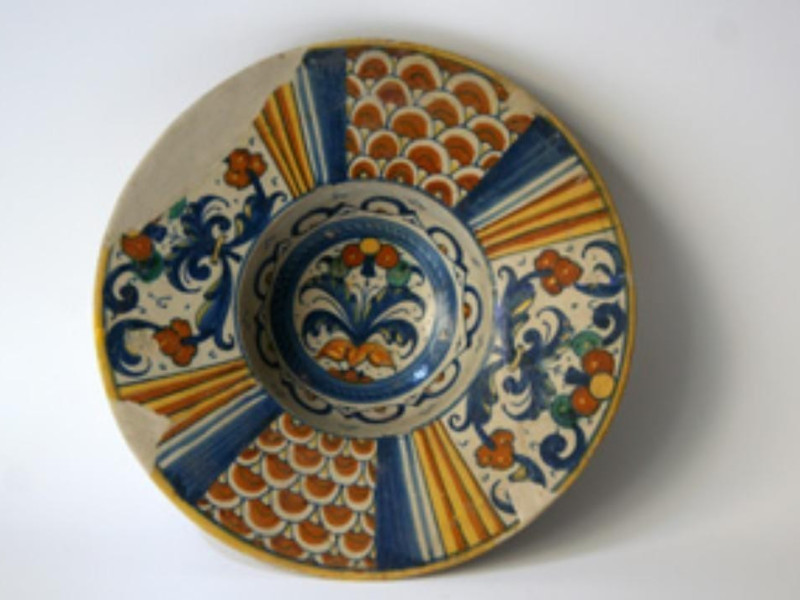Luogo - Museum
Museo delle maioliche medievali e rinascimentali orvietane
Where
Via della Cava, 8, Orvieto (Terni)
Museum of Medieval and Renaissance Majolica of Orvieto
The Museo delle Maioliche Medievali e Rinascimentali Orvietane is housed in the edifice of an ancient kiln—a special furnace for the production of ceramics—in Orvieto. The permanent exhibition displays a collection that mainly consists of waste products from two kilns that were active in Via della Cava, from the second half of the 14th century to the mid 16th century. The collection was enriched by the acquisition of majolica from later periods, which the same furnaces worked on.
The collection has many pieces and the continuity of the production of the ceramists in Orvieto makes it extraordinary. Up until the first half of the 14th century, the town of Orvieto was considered to be a center for importing majolica; this product was essentially thought of as being imported.
However, much Renaissance Majolica exhibited in museums in Italy and other countries are attributed to majolica production centers such as Deruta, Faenza, Montelupo and Gubbio, to count some of the more famous. In fact, they share iconographical referrals—family armorial or corporations’ bearings—typical of the Orvieto area of production. This fact alone should have been enough to prove their provenance from the laboratories of Orvieto, but some cultural stereotypes, oriented to or dictated by the antique market, prevented an unbiased attribution of provenance. Today, the notion that not only one, but several production centers offered the same product is commonly accepted, underlining more than anything else its excellence. If it is undisputed that the production from Orvieto reached its highest levels in the 14th century, there is the tendency to affirm that it was then overtaken in the 15th and 16th century by Faenza and Deruta. But, a close and attentive examination of the majolica of this collection—above all to the kiln production waste—makes it clear that the quality remained very high.
The Museum makes ten rooms available for the display, starting with the Conference Hall, where once, in medieval times and during the Renaissance, majolica was processed for decoration painting and prepared for firing inside the kilns. In the so-called Sala della Cisterna—cistern room—it is still possible to see the actual cistern in which the water for the production of ceramics was kept. From there, the same water, through a channel excavated into the rocks and probably through a pipe, reached the places where raw clay was molded—tornitura—into shape. In the Sala della Fornace—the kiln room—it is possible to visit an almost intact and truly original ceramic kiln. In fact this is the only 15th century kiln that still exists in the entire World. In the Sala del Trecento—the room dedicated to the 1300s—the ceramics displayed, almost all-waste production remains, are the kind that have been considered to be a typical production from Orvieto. In the Sala dei Simboli—symbols room—there are the most important pieces of the collection. In the Sala delle Truffette—the room of the globular ewers—it is possible to see how some typologies of majolica were produced almost in series, which shows us that more than being an artisan workshop, the furnace was a real and true ceramic factory. Apart from the common stains—boccali—there are the globular ewers called truffette. In the Sala delle Zaffere—the room of the blue painted ceramics—there is evidence of all possible kinds of blue painted ceramics, called zaffere: from the classical to the diluted ones, ending with the so called damaschine and the imitations of oriental manufactured porcelain. In the Sala delle Ciotole—room of the bowls—in a part of the bowls it is possible to find very particular majolica. In the Sala del Rinascimento—Renaissance room—there are mostly many manufactured items coming from this furnace that, even if found in the Orvietans wells—excavated to throw away domestic waste—were attributed to artisan workshops of other towns. Typologies from Viterbo or from the northern area of the Lazio region, from Deruta, Faenza and Tuscany—or from other less probable provenances, such as the graffiti over the glazed slip casting, or ingobbio, the kind produced in Ferrara or in Veneto—are distinguishable. In the Sala delle Tazzine—room of the teacups—with its more than four hundred teacups, there is the evidence of ceramic production of an industrial character from the Via della Cava furnace.
